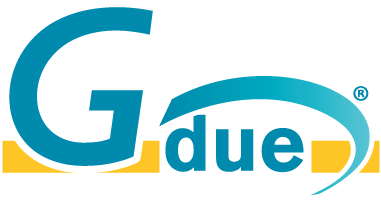How does Gdue work?
It is an essential dietary ally for patients suffering from overweight, obesity, dysglycaemia, diabetes, and cardiovascular risk
It is extremely important to keep normal blood sugar levels: high postprandial blood glucose level is the first sign that physiological control mechanisms are beginning to be altered and, thus, the first step towards:
Gdue is the first nutraceutical used to control carbohydrate absorption that shows a favourable effect on all conditions of the Metabolic Syndrome.
Do you know what
dysglycaemia is?
Fasting blood glucose greater than or equal to 100 mg/dl
In all conditions characterised by dysglycaemia, it is essential to modify lifestyle by implementing a healthy diet and physical activity.
Although there is no doubt that a change in lifestyle is the best approach towards preventing diabetes and its complications, unfortunately, it has turned out to be very difficult, and unsuccessful in most cases, not only to implement these measures but also keeping them over time.
Dysglycaemic individuals can also be defined as pre-diabetic, and there are many conditions that lead to dysglycaemia:
- IFG – Impaired fasting glycaemia
- IGT – Impaired glucose tolerance
- Diabetes
- Obesity
- Overweight
- Metabolic syndrome
- Polycystic ovary syndrome
- Gestational hyperglycaemia – Gestational diabetes
- Postprandial hyperglycaemia
Do you know what
postprandial blood glucose level is?
High postprandial blood glucose level is the first evidence that blood glucose control mechanisms are beginning to be altered and, thus, the first step towards overweight and obesity, diabetes and its complications, and altered blood pressure and cholesterol levels.
Postprandial blood glucose level has been shown to be an independent, modifiable cardiovascular risk factor and a powerful inducer of endothelial damage.
Consuming meals with a low glycaemic index helps limit the range of postprandial glycaemic peaks.
Calculate your BMI (Body Mass Index)
Why is it important to calculate your BMI?
The value of your BMI together with that of other specific indicators that determine the location of fat in the assessment of body composition, assesses (especially for the overweight and obesity classes) the increased risk of diseases such as type 2 diabetes, cardiovascular diseases, articular diseases due to overload, hormonal dysfunctions, tumours and, in women of childbearing age, any alterations in the menstrual cycle, difficulties getting pregnant, and complications during pregnancy.
Calculate your BMI and find out which class you belong to in the table below.
| BMI | ||
|---|---|---|
| < 16 | Severe thinness | According to the criteria defined by the World Health Organisation, your BMI is very low. Please consult a doctor. |
| 16,00 – 18.49 | Underweight | According to the criteria defined by the World Health Organisation, your BMI is low. Please consult a doctor. |
| 18,50 – 24,99 | Normal weight | According to the criteria defined by the World Health Organisation, your BMI is optimal. |
| 25,00 – 29,99 | Overweight | According to the criteria defined by the World Health Organisation, your BMI is higher than the optimal parameter. |
| 30,00 – 34,99 | Obesity class I | According to the criteria defined by the World Health Organisation, your BMI is high. Please consult a doctor. |
| 35,00 – 39,99 | Obesity class II | According to the criteria defined by the World Health Organisation, your BMI is very high. Please consult a doctor. |
| ≥ 40,00 | Obesity class III | According to the criteria defined by the World Health Organisation, your BMI is very high. Please consult a doctor. |
<16
Grave Magrezza
Secondo i criteri definiti dall’Organizzazione Mondiale della Sanità, il tuo BMI è molto basso. Ti consigliamo di rivolgerti ad un medico
16,00 – 18.49
Sottopeso
Secondo i criteri definiti dall’Organizzazione Mondiale della Sanità, il tuo BMI è basso. Ti consigliamo di rivolgerti ad un medico
18,50 – 24,99
Normopeso
Secondo i criteri definiti dall’Organizzazione Mondiale della Sanità, il tuo BMI è ottimale.
25,00 – 29,99
Sovrappeso
Secondo i criteri definiti dall’Organizzazione Mondiale della Sanità, il tuo BMI è più alto del parametro ottimale.
30,00 – 34,99
Obeso Classe I
Secondo i criteri definiti dall’Organizzazione Mondiale della Sanità, il tuo BMI è alto. Ti consigliamo di rivolgerti ad un medico
35,00 – 39,99
Obeso Classe II
Secondo i criteri definiti dall’Organizzazione Mondiale della Sanità, il tuo BMI è molto alto. Ti consigliamo di rivolgerti ad un medico
≥ 40,00
Obeso Classe II
Secondo i criteri definiti dall’Organizzazione Mondiale della Sanità, il tuo BMI è molto alto. Ti consigliamo di rivolgerti ad un medico
Measure your waist circumference
Why is it important to measure waist circumference?
Waist circumference measuring is a sign of overweight or obesity: excess weight increases the risk of hypertension, hypercholesterolemia and diabetes, conditions that increase the risk of cardiovascular disease and strokes.
A waist circumference of more than 94 cm in men and 80 cm in women is considered morbid.





